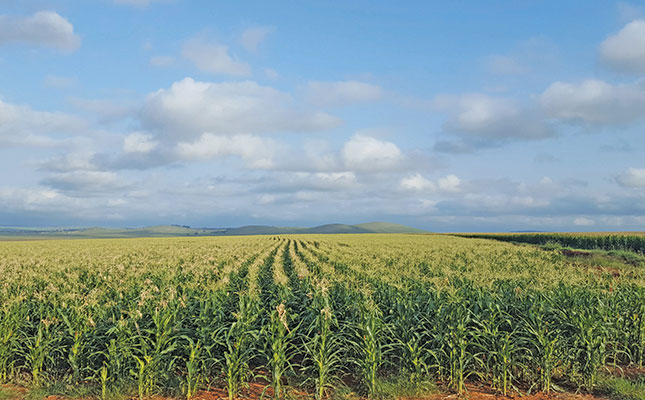Starting a business, especially later in life, often springs from having had a long-standing interest in a subject or an activity. Madie van Zyl, who launched Toverveld Biltong in 2008, is no exception.
“I grew up on a farm and learnt from my mother Magda Kruger and grandmother Maria Steenkamp how to dress and process cattle, game and sheep carcasses. I relish this kind of work. During my high school years, I used to work in a butcher shop during school holidays to earn pocket money, and I enjoyed it very much,” she recalls.

First of all, however, came studies and marriage. Van Zyl qualified as a physiotherapist and in 1997 married Danie, a Northern Cape cattle and sheep farmer.
Unfortunately, the couple’s farm, De Dam, is 50km from the nearest town of Colesberg, so Van Zyl was unable to practise physiotherapy after her marriage. The couple went on to have a family, and years later, when three of her four children were at boarding school, Van Zyl found herself with more time on her hands and became determined to earn an income.
Given her interest and background in meat processing, biltong production seemed an obvious choice. With encouragement from her family and financial support in the form of a loan from her parents, Van Zyl launched her business, beginning in a garage on the farm and using the bare minimum of equipment.
“I started with biltong and droëwors, and later added ‘chilli bites’ and ‘chutney bites’. “Initially, I was a bit apprehensive about these because I thought the process was too labour-intensive, but I was wrong: they’re highly popular and now form one of our mainstays. The business has grown hand over fist,” she says.
Meat preservation
Van Zyl points out that biltong forms an important part of Southern African culture. Meat processing and preservation has been an integral part of humans’ survival strategies, and in Southern Africa in particular, indigenous people achieved this by slicing the meat, curing it with salt, and hanging it up to dry.
Curing draws moisture away from meat, reducing bacteria, and the method was enthusiastically embraced by the first Europeans to settle in the region. Livestock numbers were very low at that stage, and the Europeans followed the indigenous people’s example of making biltong from game species such as eland and kudu.
“The Europeans then introduced spices such as cloves, coriander and pepper, and the dried meat that they made took a step closer to becoming the biltong we’re familiar with today,” says Van Zyl.
“When the Voortrekkers migrated from the Cape to the interior, biltong provided them with an indispensable source of highly nutritious protein that would keep for long periods. These biltong-making skills have been passed down since the Great Trek and are still used today.
“The Europeans also added vinegar and saltpetre (potassium nitrate) to kill off any bacteria in the meat and prevent the spread of disease.”
Potassium nitrate has long been used to preserve a variety of meats, including ham; in addition to preventing botulism, it fixes the colour of the meat and improves the flavour.
A wider product range
Over the years, Toverveld expanded its product range and today markets biltong
in a variety of guises (sticks, balls, leaves and wheels), as well as traditional droëwors, caseless droëwors, and ‘Karoo mix’, a combination of all of these. It also markets fresh meat products such as beef fillet, boerewors, beef patties and mince.
Van Zyl recently decided to cut down on wholesale sales and market the products online and via the Toverveld Farm Deli, which opened a year ago in Colesberg. She also butchers and dresses beef, game meat and mutton/lamb for private clients.
Beef biltong remains their best seller. Van Zyl explains that Toverveld biltong has its sought-after flavour because she uses only carcasses of animals raised on Karoo veld. She keeps her biltong spice recipe close to her chest, but concedes that it contains freshly roasted and ground coriander, salt, black pepper and cloves.
“I still use my grandmother’s recipe, which has been used in our family over generations, and also adds to the biltong’s unique taste. “All our beef biltong, droëwors and boerewors products are free of MSG and obviously also free of gluten.
“Biltong has surprising health benefits which not many people are aware of. It’s low in fat, high in iron and zinc, and is an excellent source of vitamin B12. To keep our biltong as healthy as possible, we don’t use any artificial additives.”
Initially, Toverveld processed one beef carcass (about 240kg) a month, which equates to 50kg of undried biltong. With growing demand, this increased to two beef carcasses per month and later on to between six and eight hindquarters. Van Zyl and her team currently process approximately 1,5t of raw meat per month.
Production process
According to Van Zyl, the ideal carcass for dried meat products is a Grade C with ample
fat that comes from an animal raised exclusively on the veld. The ideal piece of biltong, she adds, is not too dry, edged with a thin layer of fat, and has medium spicing. Fat makes for excellent taste, and she consequently uses only yellow beef fat in the droëwors.
Upon arrival on the farm, the carcasses are quartered and the pieces earmarked for biltong are kept aside. The biltong is then cut, weighed, spiced, and left overnight to absorb the flavours. The following day, the pieces are hung and left for between four and seven days.
“We only use fans in the drying process to ensure the authentic biltong taste. We keep the cuts used for biltong leaves in a deep freezer overnight and cut them the next day using a polony slicer. It’s much easier to do so when the cuts are frozen hard.
“The spiced leaves are dried on racks for between four to eight hours. Biltong leaves dry off relatively quickly, depending on the prevailing temperature,” she says.
No waste
Nothing goes to waste in the fully equipped and modern butchery on De Dam. The offcuts are used for chilli and chutney bites, and all other meat left over is sold as steak mince. The rest of the carcass is used for boerewors and all the other droëwors products.
Traditional droëwors is hung and left for three to four days, while the thin droëwors without casings takes one or two days to dry on racks.
“The biltong wheels are packed in special containers, frozen overnight, cut the next day (also with a polony slicer), and left for between four to eight hours on racks. The products are packed immediately after processing and frozen, ready to be marketed when necessary.
According to Van Zyl, freezing retains moisture and adds to the tenderness of the products.
Clients are supplied directly from the farm’s own butchery and farm kitchen via courier, or at the Toverveld Farm Deli, which effectively cuts out the middleman and helps to keep costs down.
Quality and consistency are key to customer satisfaction
Van Zyl ascribes the success of her business largely to the fact that she is actively involved in the day-to-day operations and is supported by a reliable and efficient team. Quality and consistency are non-negotiables, and she therefore insists on mixing the spices herself.
She adds that running a profitable, sustainable business also calls for tenacity, a customer-centric approach, and “very, very hard work”.



